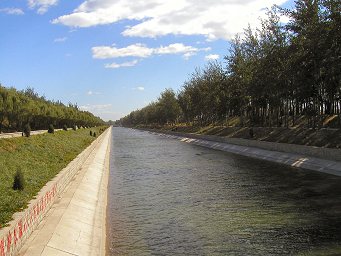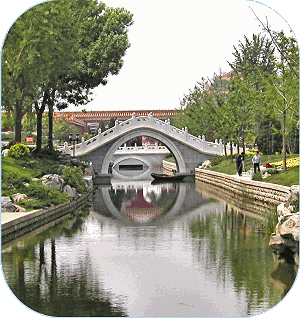Introduction (1) - Lost and Found
![]()

No city can sustain life unless it has plenty of food and fresh water. For centuries people settled around Beijing had depended upon Yongding River, just west of Beijing, as a source of waterflow for drinking, irrigation and sanitation. But the terrain around Yongding River was uneven and the waterflow hard to control resulting in frequent floodings with massive loss of life and destroyed food.
This was alarmingly clear to Kublai Khan as he in 1267 inspected the busy construction progress of his new grand southern capital of Dadu, today's Beijing. And not only did he need plenty of fresh water, he also needed a more efficient way of transporting foodstuff and building material from south China to the future site of Dadu.
The Grand Canal, in which grain from the south was transported to the capital, had already long ago been extended to reach a point 18km east of Beijing at Tongxian. But the last critical stretch proved a huge challenge due to the lack of sufficient, controllable water.

In his service was a famous scientist and astronomer, Guo Shou Jing (1231-1316). After carefully surveying the areas around Beijing this scientist finally came across a spring with abundant water at Baifu, some 20 km north of Beijing. Through the construction of an extensive canal and river system, the Baifu Canal (photo) would soon become the lifeline for Beijing -and, more incredibly, was to remain so to this very day.
So what happened to this large scale water system? Where is it now some 700+ years later?
This feature will demonstrate that -surprisingly- most of the canals, lakes and rivers have survived the onslaught of man and time. In fact, Beijingers and visitors to Beijing are unwittingly well aware of Guo Shou Jing's water system because it still features prominently a.o., in The Forbidden City and the large lakes west of The Forbidden City.
But also most of the many "lost" parts of the water systems can be located with a little persistence. Many have been led into well-groomed canals or crudely buried underground. But even those can be found with a little persistence!
Welcome to the story of Beijing's long forgotten waterways.